Innovation update October 2018
Innovation update October 2018
Welcome to the latest issue of our innovation newsletter. In this issue we cover our industry conference and the key findings from our Respond project.
Showcasing our industry
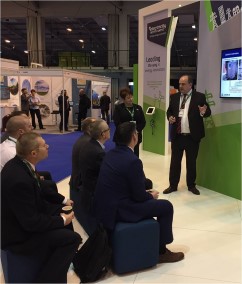
On 16-17 October 2018, we'll be attending the eighth annual Low Carbon Networks & Innovation conference at The International Centre, Telford. The conference brings together experts from across the energy sector to showcase the latest innovative technology which is crucial in supporting the transition to a low carbon energy future.
Last year over 1,000 delegates from across the energy industry attended the two-day event to discuss our industry’s network innovation projects through a programme of breakout and workshop sessions. This year we'll be sharing the latest findings from our Smart Street and Respond projects as part of the following sessions:
- Smart Street with Dr Geraldine Paterson - Tuesday 16 October, 2.30 - 4.00pm, Transition to a Low Carbon Future
- Respond with Ben Ingham - Wednesday 17 October, 2.30 - 4.00pm, Network Improvements and System Operability.
We'll also be holding informal ‘on-stand’ presentations:
- Celsius with Delroy Ainsworth - Tuesday 16 October, 2.00 - 2.30pm, Stand M07
- Distribution system operator (DSO) with Steve Shaw, Wednesday 17 October, 2.00 - 2.30pm, Stand M07.
If you would like to register to attend this year's conference, visit the conference website. Please come and have a chat to our innovation team on Stand M07. We look forward to seeing you there.
Launch of innovation 'call for ideas'
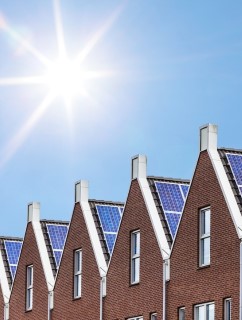
A £90 million innovation competition has been launched by the UK’s energy network companies.
The Energy Networks Association (ENA) has launched a Call for Ideas for the Network Innovation Competition (NIC), which aims to support a range of large energy technology projects.
Research suggests up to £8 billion of savings a year could be made from energy networks investing in smart power innovations, with as much as £214 billion forecast to be saved by consumers before 2050 if new technologies are used to drive decarbonisation.
Successful applicants will work with network companies to compete for up to £20 million of funding available for gas network projects and up to £70 million available for electricity network projects.
The ENA says proposals must provide a clear cost benefit to both the public and energy networks, while enabling environmental improvements and demonstrating 'genuine innovation'.
David Smith, CEO of the ENA said: “This is an exciting chance for innovators to deliver projects that will make a real difference to the way networks operate in communities up and down the country.
“Network innovation is vital to keeping energy bills down for the public, whilst delivering a smarter, cleaner and more flexible energy system that serves the country.”
The call for ideas closes on the 26th October. Applications can be made on Energy Networks Association’s Network Innovation Collaboration Portal.
Respond project proves technology
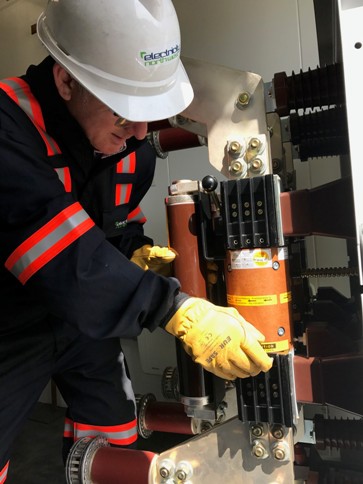
Our £5.5 million Respond project will be completed this month. Respond provides an intelligent approach to managing fault current – the instantaneous surge of energy which occurs when we have a fault on the network.
Using intelligent software known as the Fault Level Assessment Tool, Respond uses network data to calculate fault level in near real time. When fault level approaches or rises above network equipment ratings, the tool ‘enables’ or ‘disables’ one of three Respond fault level mitigation techniques: Adaptive Protection, the Is-limiter or the Fault Current Limiting service. Respond technology is installed at 14 primary substations serving around 140,000 customers.
Adaptive Protection re-sequences the operation of circuit breakers to reduce fault level. The seven installations on our network were designed to ensure they can be easily replicated on other electricity networks as either standalone or retrofitted units. During the Respond trials which ran from May 2016 to May 2018, the Adaptive Protection technology operated eight times following a network fault.
The Is-limiter is a current-limiting fuse which detects the rapid rise in current when a fault occurs and responds within 1/200th of a second to break the current. The Is-limiters went through a number of factory acceptance testing stages during construction before being installed at two of our substations. The Is-limiters operated twice during the trials.
The Fault Current Limiting (FCL) service provides a unique opportunity for large demand and generation customers to earn rewards by selling a fault current limiting response to their local network operator through a managed service agreement. Although we did not successfully procure FCL services from a customer, we designed and constructed an installation to prove the technique and the enabling technology. Templates for fault current limiting service contracts and findings from our commercial research are available on our project website.
Respond will benefit all electricity customers by helping to avoid or defer traditional, expensive and disruptive reinforcement. This will help keep costs down, reduce carbon emissions and allow low carbon technologies to be connected to the network much more quickly. The project closedown report will be available on the website by 31 October 2018.
Cooling down substations with Celsius
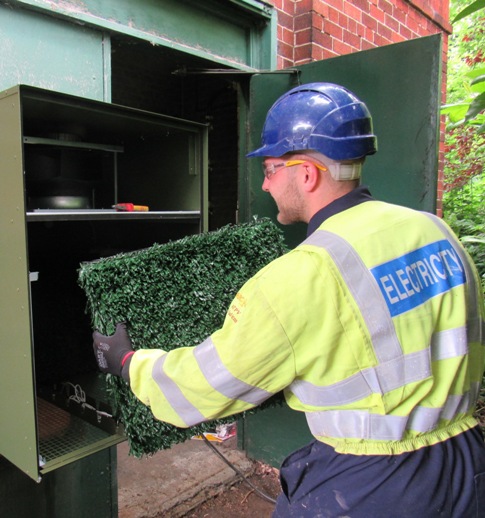
Our programme to install cooling techniques at 100 of our substations is now complete. Over the past few months we have installed active techniques to improve ventilation at 40 of our sites and passive techniques such as painting, providing shade or additional vents, at the remaining 60 sites.
We are now monitoring data from the trial sites to help us understand how the environment and temperature affect electrical equipment and how cooling can help release more capacity to power the electricity network. At the same time we are carrying out a series of surveys to find out what customers living near the substations think of the new techniques.
As well as the installations at trial sites, we are also using active cooling in a city centre substation, demonstrating the practical application of this technique as a low cost, quickly deployable, business as usual solution. This Celsius cooling system was installed when a transformer in Manchester started to show signs of overheating. Based on our early findings, we believe that a 'Passcomm' unit can resolve the issue and delay reinforcement. Sensors installed around the substation will provide data allowing us to monitor the impact of the cooling equipment, and we are planning to install a 'cooling fail alarm' which will be connected to our new network management system, to alert us to any issues.
Useful links
You can find out more detailed information about our strategy and all of our innovation projects using the following links:
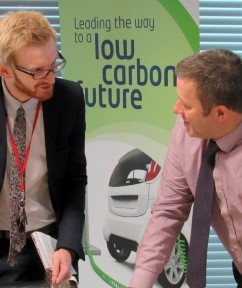 Our innovation strategy, updated September 2018: www.enwl.co.uk/innovation-strategy
Our innovation strategy, updated September 2018: www.enwl.co.uk/innovation-strategy - Our LCN Fund project Smart Street: www.enwl.co.uk/smartstreet
- Our LCN Fund project Respond: www.enwl.co.uk/respond
- Our NIC project Celsius: www.enwl.co.uk/celsius
- Our NIA projects: www.enwl.co.uk/nia
- Meet the Electricity North West innovation team: Meet the team
- The Electricity Networks Association smarter networks portal: www.smarternetworks.org
- The Energy Network Association’s national Electricity Network Innovation Strategy published in March 2018.
Or contact us at innovation@enwl.co.uk.
If you would like to find out about other Electricity North West projects and events please register for our other stakeholder newsletters.